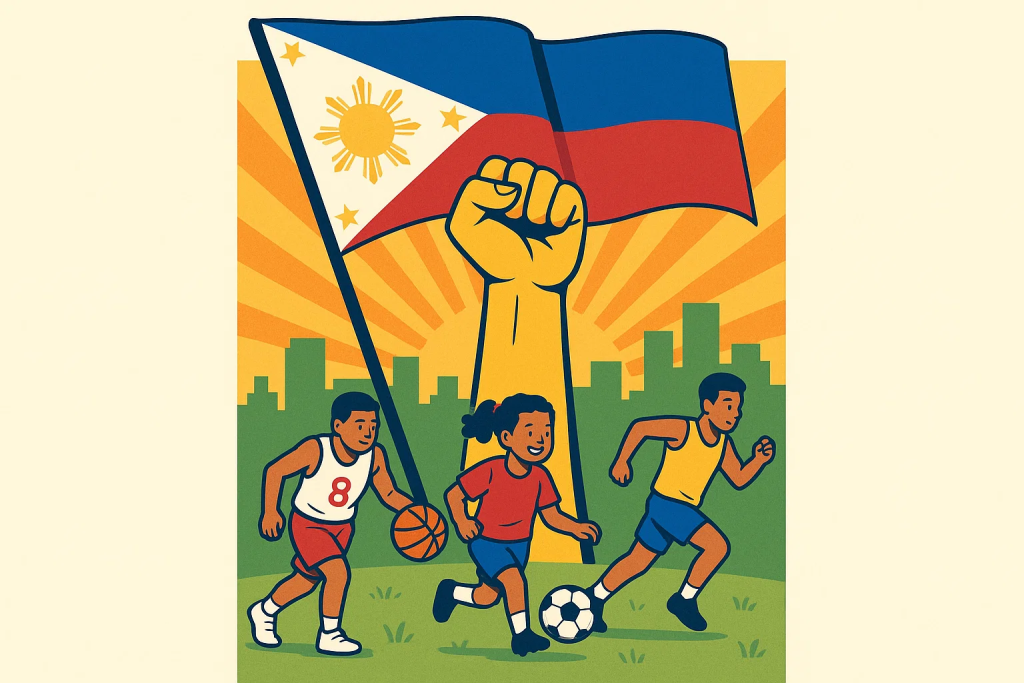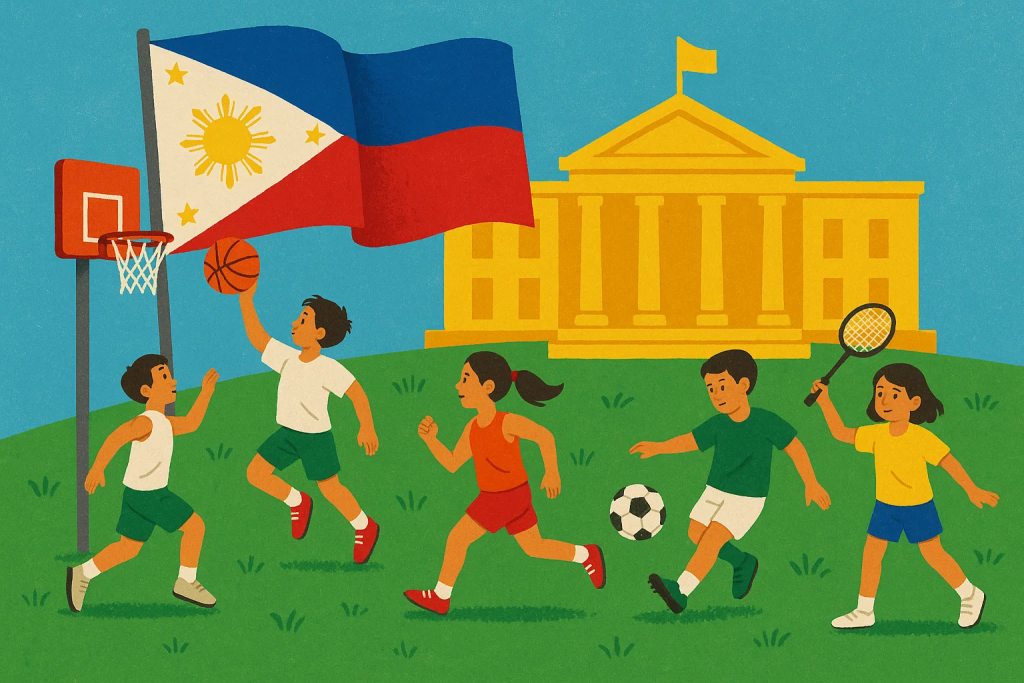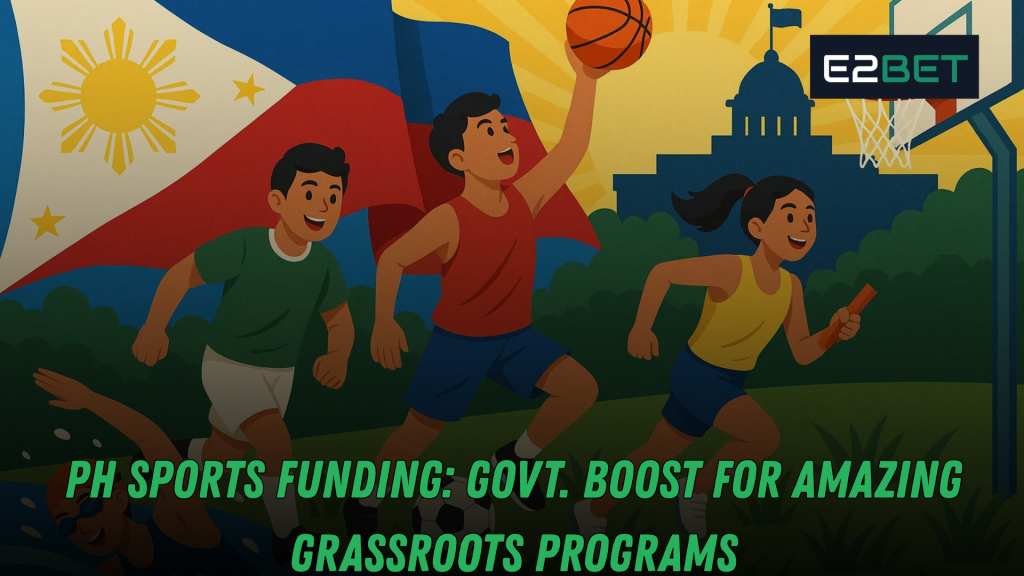Table of Contents
Executive Summary
The Philippines Sports is entering a pivotal decade for youth and community sport, and the clearest signal is a national focus on making play accessible, safe, and reliable in every barangay. When policy makers, schools, and local leaders align their calendars and budgets, a weekend game becomes a weekly habit, and that weekly habit turns into healthier bodies, better classroom attendance, and tighter-knit neighborhoods. The thread stitching those outcomes together is sports funding deployed with humility and discipline.
This long-form guide translates that big idea into practical steps anyone can run: how to prioritize facilities that protect dignity, how to staff and train coaches without burning them out, how to structure schedules around heat and rain, and how to measure impact without drowning volunteers in forms. You will also find an easy proposal template, a 120-day rollout, a transparent sample budget, and a short list of common mistakes to avoid.
Above all, the playbook insists on access first, excellence second. When communities focus on comfort, safety, and rhythm, participation grows naturally, and the most promising athletes rise without starving others of opportunity. This is how to turn pesos into programs, programs into habits, and habits into pride—one reliable Saturday at a time.

What “sports funding” means in the Philippine context
At its simplest, sports funding is the public and partner money earmarked for facilities, equipment, competitions, coach stipends, medical coverage, and the systems that keep all those pieces honest. In the Philippine context, the money usually flows through four channels working in parallel. First, national agencies underwrite amateur development and anchor national calendars for campus and youth events. Second, education budgets keep intramurals and qualifiers alive in schools while paying for teacher-coaches and basic gear.
Third, local government units co-finance barangay leagues, custodial maintenance, and quick repairs after storms. Fourth, private partners offer in-kind support—water, bibs, buses, tents—as well as small grants that extend public allocations. When those channels line up behind a single, predictable calendar, the results multiply. The community gets consistency. Coaches get structure. Parents get trust. Children get a safe place to grow. In that world, sports funding stops being an abstract line item and becomes shaded benches, cold water, first-aid kits, trained mentors, and schedules you can set your week by.
Why Sports grassroots programs deserve first claim on the budget
Grassroots is where identity and skill first meet structure. Children who discover a team early learn punctuality, voice, shared rules, and restraint long before they memorize a playbook. That is why the first priority for sports funding is predictable access: courts that open on time, coaches who arrive with a plan, and schedules that respect school hours and tropical weather. A barangay league with thirty reliable Saturdays can do more for public health than a single parade of champions.
The second priority is dignity: lighting that works at dusk, restrooms that are open and clean, shaded seats for grandparents, and water that never runs out. The third priority is inclusion: girls’ time slots, para-friendly lanes, and posted expectations that make beginners feel welcome. When small barriers disappear, kids show up consistently, parents relax, and the long-term benefits—lower absenteeism, healthier sleep, calmer homes—preview the wider social returns that responsible sports funding can deliver.
The spending pyramid: essentials, people, programs
Picture a simple pyramid. On the bottom are physical basics that keep participants comfortable and willing to return: flat surfaces, working lights, clean toilets, drinkable water, and storage that keeps gear from wandering. In the middle are people costs: coach stipends, referee fees, medical coverage, security, and snacks for volunteers. On top are programs: entry fees, small trophies, transport to qualifiers, and a modest media budget for schedules and highlights.
The temptation is to start at the tip with shiny extras, but sustainable results only happen when the base is thick. Direct your sports funding to the base first, then the people, and only then to the extras. It is better to have fewer events on excellent courts with well-trained staff than many events on broken grounds with ad-hoc management. The goal is repeatable, boring excellence—because boring excellence is what families trust.
Building the pathway: barangay to campus to national pool
A healthy system is a ladder with evenly spaced rungs. The first rung is the barangay clinic where a child learns to pass, stretch, and hydrate. The next rung is district or city competition that introduces travel, rules briefings, and accountability to teammates and time. After that come school leagues and regional meets that stress exam coordination, recovery routines, and respectful media interactions. Finally, for the small percentage who want it, national camps and elite tryouts await.
Sports funding should smooth transitions up and down this ladder: entry-level gear for the first rung, transport and medical cover for the second, teacher-coach support and facility-sharing for the third, and merit-based stipends for the few who climb further. When the ladder is clear, kids can move at their own pace without falling through gaps whenever the weather shifts, a coach resigns, or a bus breaks down.
Facilities that welcome everyone
Courts send signals. A bright entrance, a posted schedule, and a working drinking fountain tell families, “You belong here.” Start with a walk-through: Are gate hours clear? Are benches shaded? Do drains backflow after rain? Are ramps present where stairs block wheels? Each fix magnifies the value of sports funding because reliability attracts participation and participation attracts additional help. Two low-cost upgrades do outsized work: shade and storage.
Shade extends safe hours in the hottest months, and storage protects balls, cones, and first-aid from wandering. Keep maintenance simple with checklists the custodial team can finish in fifteen minutes—lights, locks, litter, latrines, leaks. If you can do only one facility project this quarter, fix restrooms. Dignity is not optional. Families that feel cared for return, spread the word, and defend the program when budgets get tight.
Coaching that changes behavior
Great coaching is a public good. It teaches skill, sure, but it also teaches patience, voice, humility, and care for teammates. Fund coach education first: short clinics on inclusive cues, heat management, first-aid basics, and strength and mobility that match growing bodies. When your roster of mentors grows, the calendar fills without marketing.
Use sports funding to build a small library of practice plans and explainers: simple drill cards that fit a pocket and short videos that review fundamentals. Encourage constraint-led games that teach decisions instead of memory alone. Put a youth assistant on every crew so teenagers learn leadership and younger kids see role models who look like them. Reward coaches for attendance, safety, and retention as much as for wins. The culture you praise is the culture you get.
Safeguarding, inclusion, and dignity
The fastest way to lose families is to ignore dignity. Post a code of conduct in plain language and enforce it fairly. Separate changing spaces by age and gender. Create a quiet corner for sensory breaks and appoint a safeguarding officer who can receive concerns privately. Make sure athletes with disabilities have a clear lane and proper equipment accommodation at every event.
Use sports funding to buy a portable ramp, to print a one-page guide for parents, to label safe spectating areas, and to train volunteers on respectful language and boundaries. Protection is not paperwork; it is posture. When kids see adults take care of small things—hydration, shade, boundaries—they trust the larger promises, too. That trust keeps the pipeline thick, friendly, and safe.
Heat, rain, and the tropical calendar
The Philippines has a climate that rewards planners. Early mornings and late afternoons are your friends; high noon in April is not. Write a simple heat policy with red-amber-green thresholds and post it at the gate. Pre-fill coolers, label refill jugs, and schedule two-minute hydration stops every fifteen minutes in peak months. For rainy season, list fallback gyms and classrooms and assign a volunteer to send clear updates ninety minutes before practice.
Make warm-ups progressive and short in hotter weeks and extend recovery as temperatures rise. A little weather literacy stretches sports funding because sessions move rather than cancel, athletes feel cared for, and parents stop guessing. The public will forgive a storm; they will not forgive confusion.
Budget templates that pass sports scrutiny
A clean budget is specific and plain. List quantities, unit prices, use-by dates, and who benefits. Instead of “equipment,” write “12 match balls for U14; lifespan one season; stored in locker three.” Instead of “miscellaneous,” write “two shade tents for Saturday league; lowers afternoon surface temps; extends safe play by one hour.” This kind of clarity makes approvers comfortable and helps auditors see impact. Protect five percent for contingencies and ten percent for maintenance.
If you must cut, cut medals before first-aid; cut banners before water; cut bus branding before seatbelts. Tie every line back to a person, a schedule, and a safety outcome. Sports funding that reads like a checklist of care is easy to trust and easy to renew.
How to write a winning proposal
Keep it to three pages and make each page carry its weight. Page one: the promise—what will improve, by how much, and by when. Page two: the plan—calendar, people, and facilities with photos. Page three: the proof—last quarter’s attendance, injury-free sessions, a short parent quote, and a one-page budget. End with a simple renewal clause: “If we meet these targets, we request permission to re-allocate any savings to girls-only clinics or beginners’ gear.”
Approvers value responsible flexibility. They also value brevity; if you can say it in three pages, do not write seven. Attach receipts from your last project and a one-paragraph testimonial from a teacher, a tricycle leader, or a barangay health worker. The more concrete your story, the faster sports funding moves from intent to implementation.
A 120-day rollout any community can run
Days 1–14: Audit and align. Walk facilities, list fixes, set heat and rain policies, recruit three coaches and six marshals, and choose two sports to focus on.
Days 15–30: Teach and test. Host a two-hour clinic on inclusive coaching, hydration, first-aid, and simple strength work. Dry-run two Saturday sessions with timers, stations, and water breaks.
Days 31–60: Open league. Launch weekly sessions, publish rosters, and hold a family hour where guardians learn rules and roles.
Days 61–90: Qualify and celebrate. Run a district meet or travel to a city qualifier, post highlights the same day, thank volunteers, and share attendance charts on the barangay board.
Days 91–120: Improve and repeat. Survey families, fix the top friction point, set the next quarter’s calendar, and request renewal. Because each action is modest, sports funding stretches instead of sputtering out, and volunteers stay cheerful instead of exhausted.

KPIs that move decisions
Metrics should trigger action in a week, not a year. Track participants per session, share of girls, attendance streaks, injury rate per thousand hours, and coach-to-player ratios at peak times. Note how many sessions moved for heat or rain and whether communication reached families early. Post the dashboard publicly in the barangay hall and in parent group chats. If attendance dips, ask whether time or travel is the issue and pilot a small change for two weeks. If injuries rise, audit warm-ups and hydration, not just technique. When numbers become conversations, sports funding becomes a feedback loop rather than a ledger entry. The practice you measure is the practice you improve.
Communications that earn trust
Trust is built at the gate and in the comments. Publish calendars early, send reminders, and post receipts monthly with simple captions: what was bought, why it matters, and what changed. Share photos of shaded benches, new bibs, and the first-aid corner, not just podium shots. Spotlight volunteers by name and thank parents who car-pool. Give shy beginners a moment in your posts; show that a team is a place for every body. A transparent tone invites small sponsors, alumni, and campus groups to help. Sports funding grows when communities see themselves in the story and see their pesos working on things they care about.
Public–private teamwork
A peso multiplies when it meets a neighbor’s contribution. Ask cafés to sponsor drinking water, tricycle groups to coordinate safe rides, and print shops to discount bibs. Offer banners, shout-outs, and community posts in return. Encourage alumni to buy cones, schools to share gyms during rain, and clinics to host injury-prevention talks. Keep a short “wish list” on the barangay board—cones, a tent, a ball rack—so people can help directly. Sports funding should be the spark, not the whole fire. When everybody brings something small, the program becomes too beloved to cancel and too visible to starve.
Hypothetical case snapshots
Coastal football Saturdays. A city synchronized three school fields for early-morning age groups, bought cones and bibs, and trained parent marshals. After eight weeks, attendance stabilized and two teams asked for more practice hours. The only “marketing” was a reliable schedule and shade.
Track mornings in a dense district. Free public hours attracted joggers, PE classes, and para-athletes. A tiny budget for hydration and a first-aid tent reduced minor incidents. The greatest win was predictability and the feeling that someone was always there to help.
Rain-ready volleyball clinics. Private gyms offered off-peak rates when storms hit; the city covered transport and medics. Continuity kept teens engaged through monsoon months and gave families a routine they could count on. In each case, sports funding acted like lubrication, not paint—everything moved smoothly, nothing squeaked.
Common mistakes and quick fixes
- Buying gear before fixing toilets. Reverse the order; dignity first.
- All-day events in peak heat. Shorten windows; post a heat policy at the gate.
- One sport to rule them all. Start with two and add a third in quarter two.
- No medical presence. Train marshals; keep first-aid stocked; display emergency numbers.
- Buried rules. Posters beat memos; make norms visible where decisions happen—the gate and the bench.
- No parent education. Thirty minutes on rules lowers conflicts more than any whistle.
- Silent calendars. Publish a quarter at a time; repeat on school bulletin boards and group chats.
- Fuzzy budgets. Itemize and link each peso to a participant and a schedule.
- Ignoring girls’ schedules. Ask them what time feels safe and convenient and plan accordingly.
- Chasing only trophies. Fund adherence and health first; medals follow. Sports funding is most powerful when it buys rhythm rather than noise.
Future trends to prepare for
Three shifts are already visible. First, password-less logins and digital wallets will make registrations and small payments smoother for families; design your sign-ups for phones, not clipboards. Second, simple attendance and hydration trackers will help coaches tune sessions without turning practice into paperwork. Third, more schools and local governments will share facilities, and mixed-use parks will dominate urban planning. Each trend emphasizes the same lesson: keep your system small, legible, and friendly, and design around the people who show up most—the children and the volunteers who shepherd them. When you plan for humans instead of for headlines, you build habits that survive news cycles and tight budgets alike.
Leadership playbook: how principals, coaches, and mayors turn plans into culture
For principals: Promise that facilities will be bookable two weeks in advance, that intramurals will not collide with exam weeks, and that announcements will be posted on the same day across homerooms and parent chats. Stand up once a quarter at the flag ceremony and thank the water crew, the marshals, and the student helpers by name; this turns invisible labor into school pride. Build a tiny “wellness corner” near the court—shaded seating, a cold water jug, and a poster on hydration. Students will gather there before and after sessions and learn that care is part of sport.
For mayors and barangay captains: Promise that the court lights will turn on and off as scheduled, that the bathrooms will not be locked during practice hours, and that a staffer will own the key cabinet. Create a one-page field-use policy that any citizen can understand and a simple method to report broken nets or muddy patches. Hold a fifteen-minute huddle with the sports office every Monday: what went well, what broke, and what will be fixed by Friday. Repeat that ritual for three months and you will build a culture of follow-through that outlasts any single event.

For sports coordinators: Promise that every coach receives the weekly plan by Sunday night, that rain and heat decisions are made ninety minutes before start time, and that substitutions and playing-time norms are explained to guardians at the first meeting. Prepare laminated drill cards, a whistle, spare cones, and a first-aid kit in a single crate so any qualified adult can run a session if someone is late. The system should be resilient to small shocks so kids never pay the price for grown-up logistics.
For head coaches: Promise that every child will hear their name and one specific piece of feedback each session. Demonstrate the warm-up once, then invite captains to lead it while you set up the first station. Use short praise for effort and longer coaching for decisions. Rotate roles so quiet kids learn to speak, and energetic kids learn to listen. Rituals stitch memory; memory stitches habit; habit stitches culture.
Philippines Building the Amazing Inclusive Sports: OAR Paralympic Prep
None of these promises require new buildings. They are habits any community can start this week. What they do require is follow-through and leadership in public. When stakeholders keep small promises, parents relax, kids smile more, and the program begins to sell itself. The right kind of sports funding then becomes an amplifier, not a crutch, because the system already has rhythm and credibility.
Call to action
Choose one weak link to fix this week: a leaky faucet, a missing sign, a coach without a first-aid kit, or a schedule that runs into noon sun. Bring two photos and a three-line budget to your barangay office and request a modest pilot. Promise a one-page dashboard, a rules night, and a short highlight reel. If you are already running a league, share your best drill with the next barangay and invite them to copy your calendar. Sports funding compounds when knowledge travels. The sooner we turn pesos into shade, water, and safe schedules, the sooner children will turn effort into joy and joy into a lifelong habit of movement.
Frequently asked questions
1) What expenses are appropriate for small local grants?
Essentials first: shade, water, toilets, first-aid, basic gear, and modest coach stipends. Add transport for qualifiers and small maintenance lines. Tie each item to a clear outcome and your request becomes easy to approve under sports funding priorities.
2) We don’t have a covered court. Can we still run programs?
Yes. Schedule mornings and late afternoons, add tents and fans, and keep a rain fallback list. Allocate sports funding to comfort and safety before shiny equipment, and participation will hold through the seasons.
3) How do we keep girls participating year-round?
Ask about time, uniforms, and travel safety. Recruit at least one female coach, reserve girls-only slots, and budget for sanitary supplies. When sports funding removes real barriers, retention rises naturally.
4) Our volunteers are burning out. What helps?
Short shifts, simple roles, public thank-yous, and a tiny stipend. Provide clear checklists and rotate duties. The best use of sports funding may be the one that buys consistency in adult helpers.
5) How do we justify renewal next year?
Publish attendance streaks, injury-free weeks, girls’ share gains, and qualifier outcomes. Share receipts, post a two-paragraph story of what changed, and point to one facility fix that improved comfort. Renewal becomes a reward, not a gamble, when sports funding is tied to visible progress.
